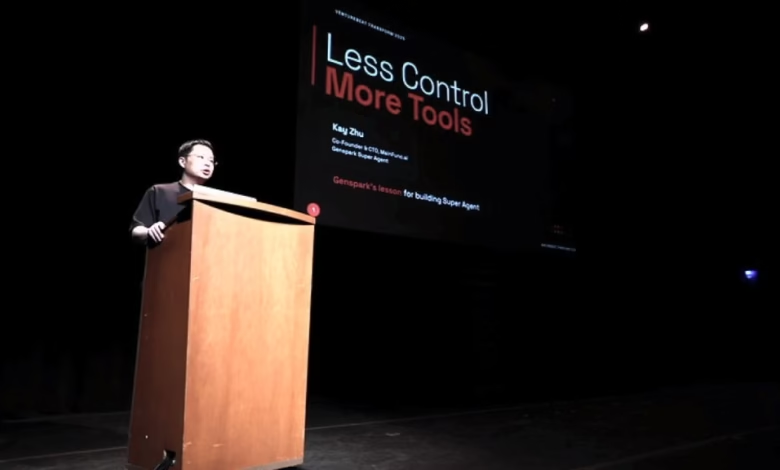Genspark Inside: Autonomous Agents Revolutionizing Workflows

▼ Summary
– VB Transform 2025 showcased Genspark Super Agent, an AI application extending “vibe coding” to broader enterprise workflows through natural language interaction.
– Genspark’s “vibe working” philosophy emphasizes less control over AI agents, enabling autonomous tasks like research, presentations, and even phone calls.
– The platform demonstrated real-world use cases, such as users employing AI to handle personal calls like resignations or breakups, highlighting its versatility.
– Genspark’s technical architecture uses a mixture of 9 LLMs and backtracking to recover from failures, differing from traditional workflow-based AI systems.
– The company’s rapid growth ($36M ARR in 45 days) signals a shift toward autonomous AI agents as a competitive differentiator in enterprise workflows.
The rise of autonomous AI agents is transforming how businesses approach complex workflows, moving beyond rigid processes toward adaptive, natural language-driven solutions. At the heart of this shift is the concept of “vibe working,” where AI systems operate with minimal human oversight, handling tasks that traditionally required meticulous planning.
One standout example is the Genspark Super Agent, showcased at a recent industry event. Unlike conventional AI tools bound by predefined steps, this platform thrives on flexibility, autonomously managing everything from research and presentations to making phone calls, demonstrated live when it dialed an event organizer mid-presentation. The system’s ability to navigate unscripted scenarios highlights a broader trend: enterprises are increasingly embracing AI that thinks on its feet.
What sets Genspark apart is its rejection of rigid workflows in favor of backtracking and adaptive problem-solving. Powered by a blend of nine large language models and over 80 specialized tools, the platform evaluates each action, learns from missteps, and iterates in real time. This approach contrasts sharply with frameworks like LangChain, which rely on structured processes. The result? AI that doesn’t just follow instructions but improvises when faced with ambiguity.
User behavior underscores the platform’s versatility. Beyond typical business tasks, people have deployed it for deeply personal interactions, resigning from jobs or even ending relationships. These unconventional applications reveal a growing comfort with AI autonomy, pushing boundaries beyond corporate use cases.
For enterprises, the implications are significant. Early adopters leveraging autonomous agents gain a competitive edge, especially as complex, unpredictable tasks dominate AI workloads. Companies clinging to traditional workflow models risk falling behind as AI-native competitors prioritize adaptability. The message is clear: the future of enterprise AI isn’t just about automation, it’s about intelligence that flows as dynamically as human thought.
The rapid commercial success of platforms like Genspark, which scaled to $36 million in annual recurring revenue within weeks, signals a market ready for this evolution. The question isn’t if autonomous agents will redefine work, it’s whether businesses can adapt fast enough to harness their potential.
(Source: VentureBeat)


